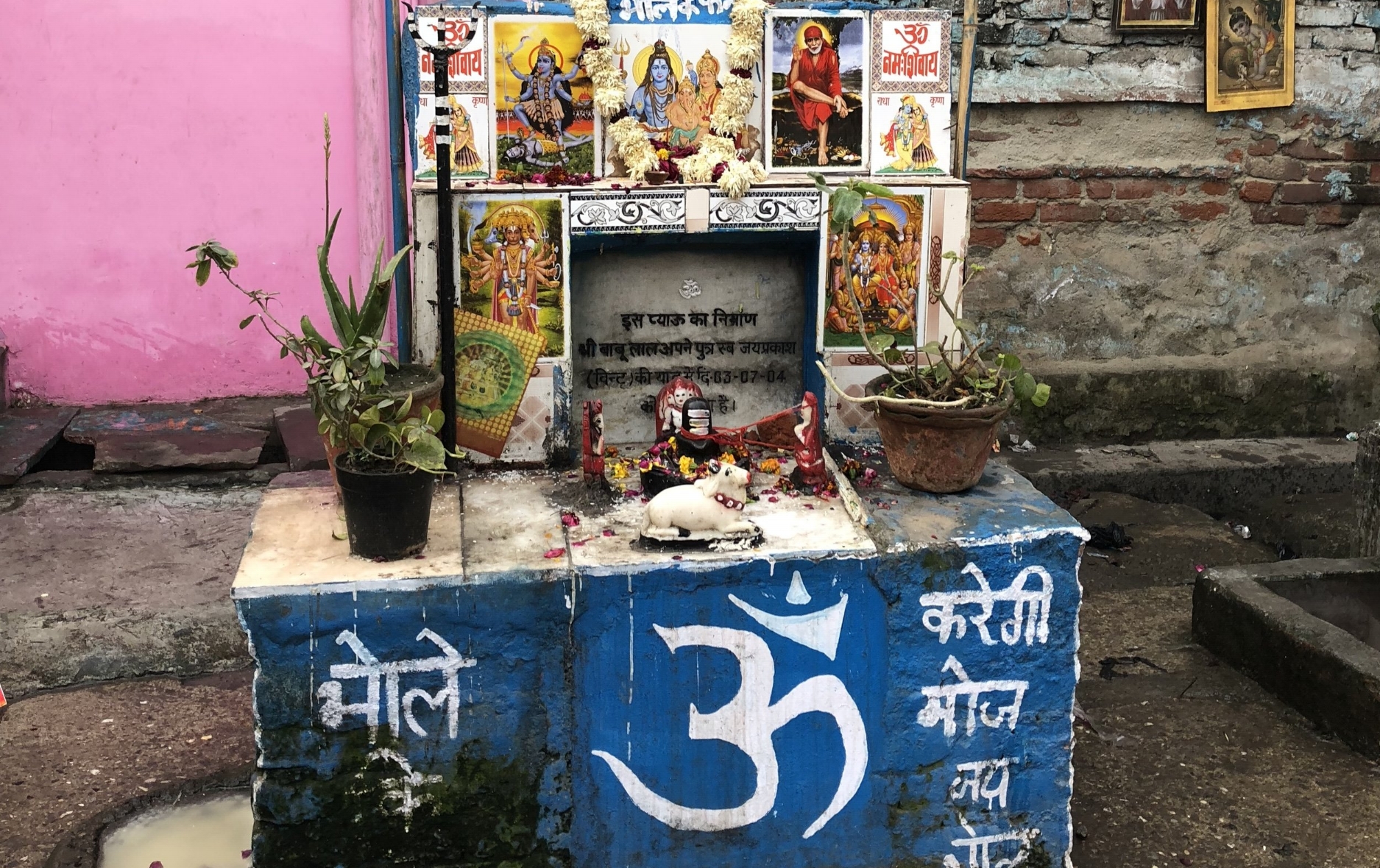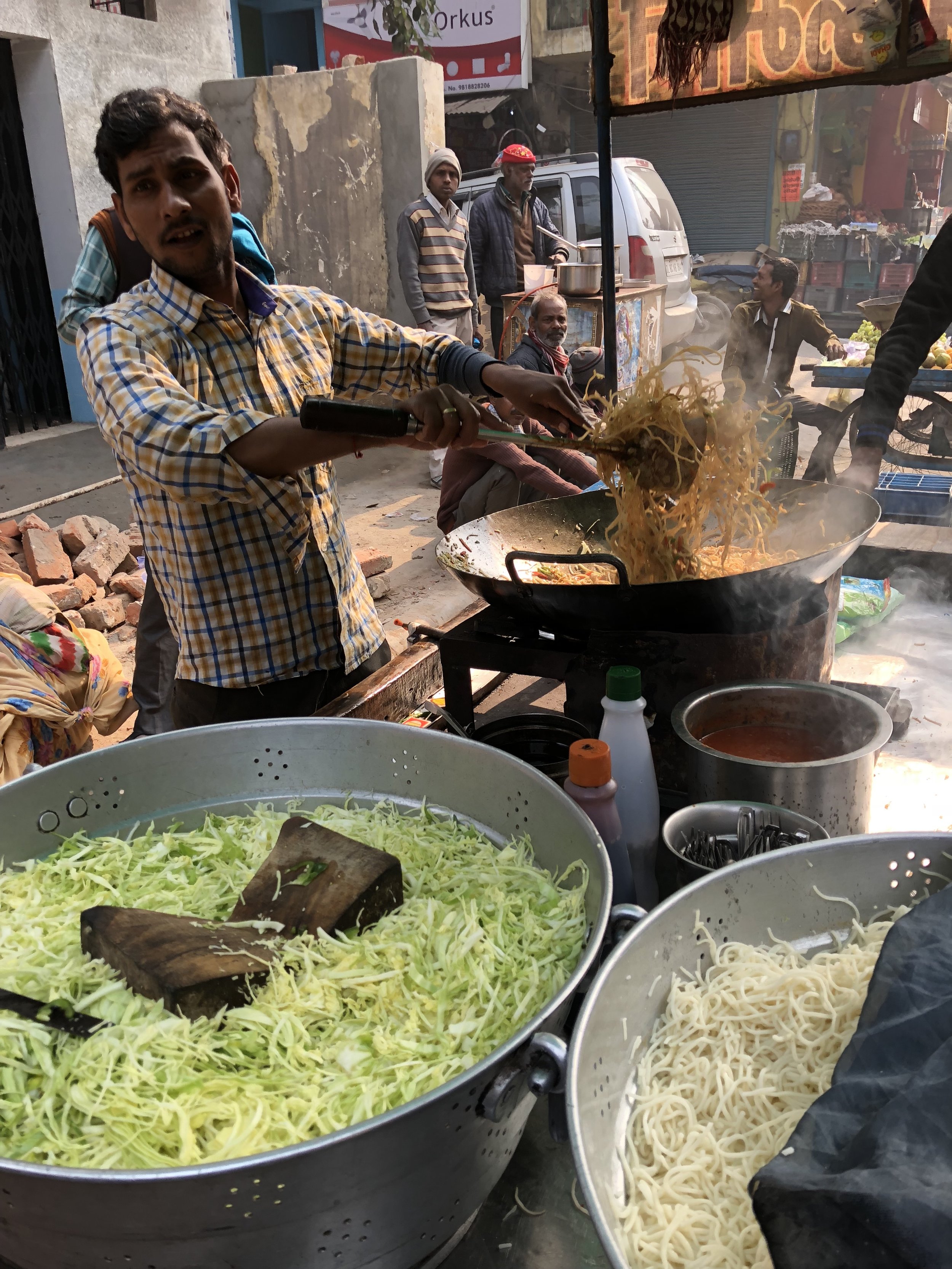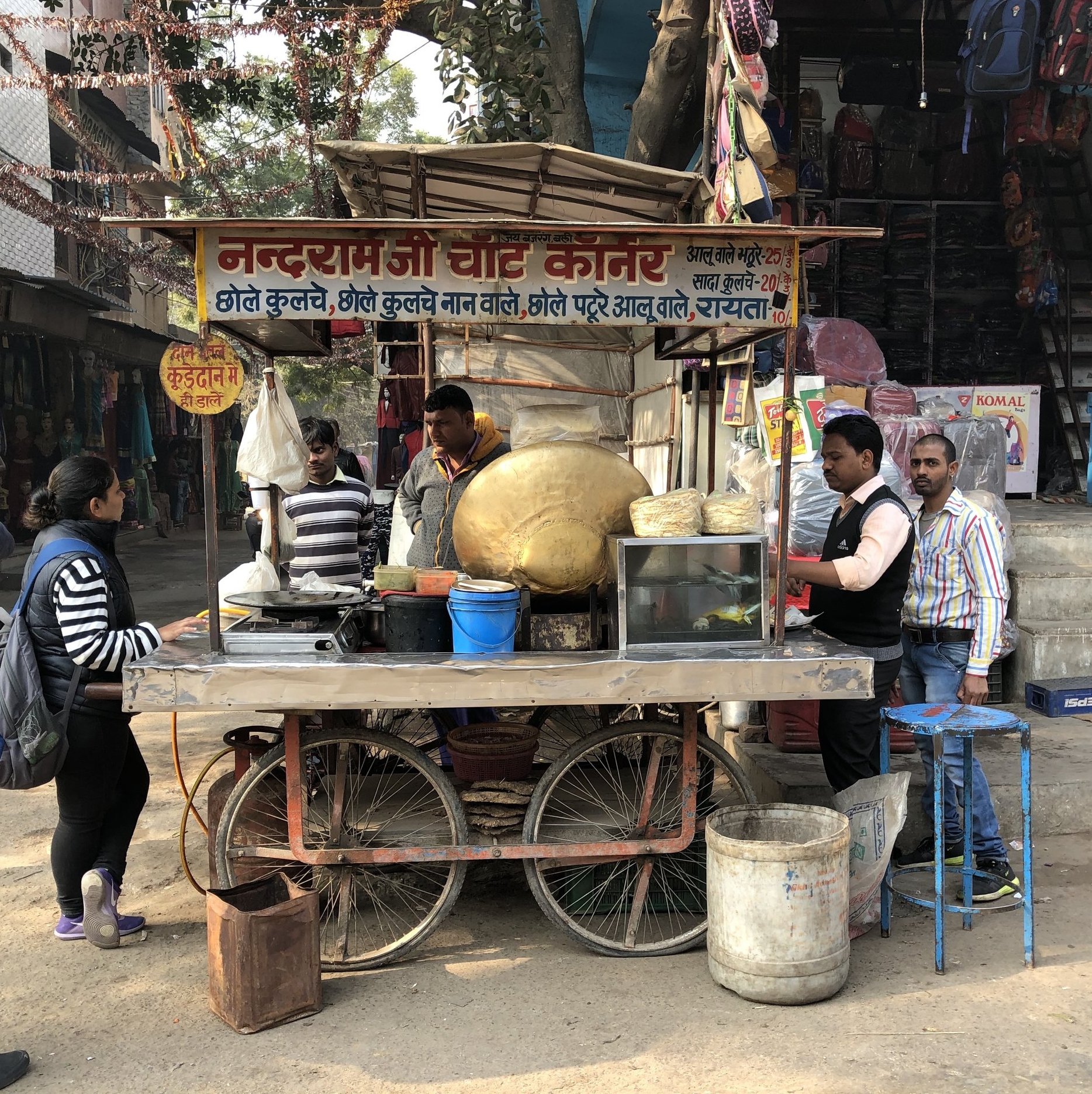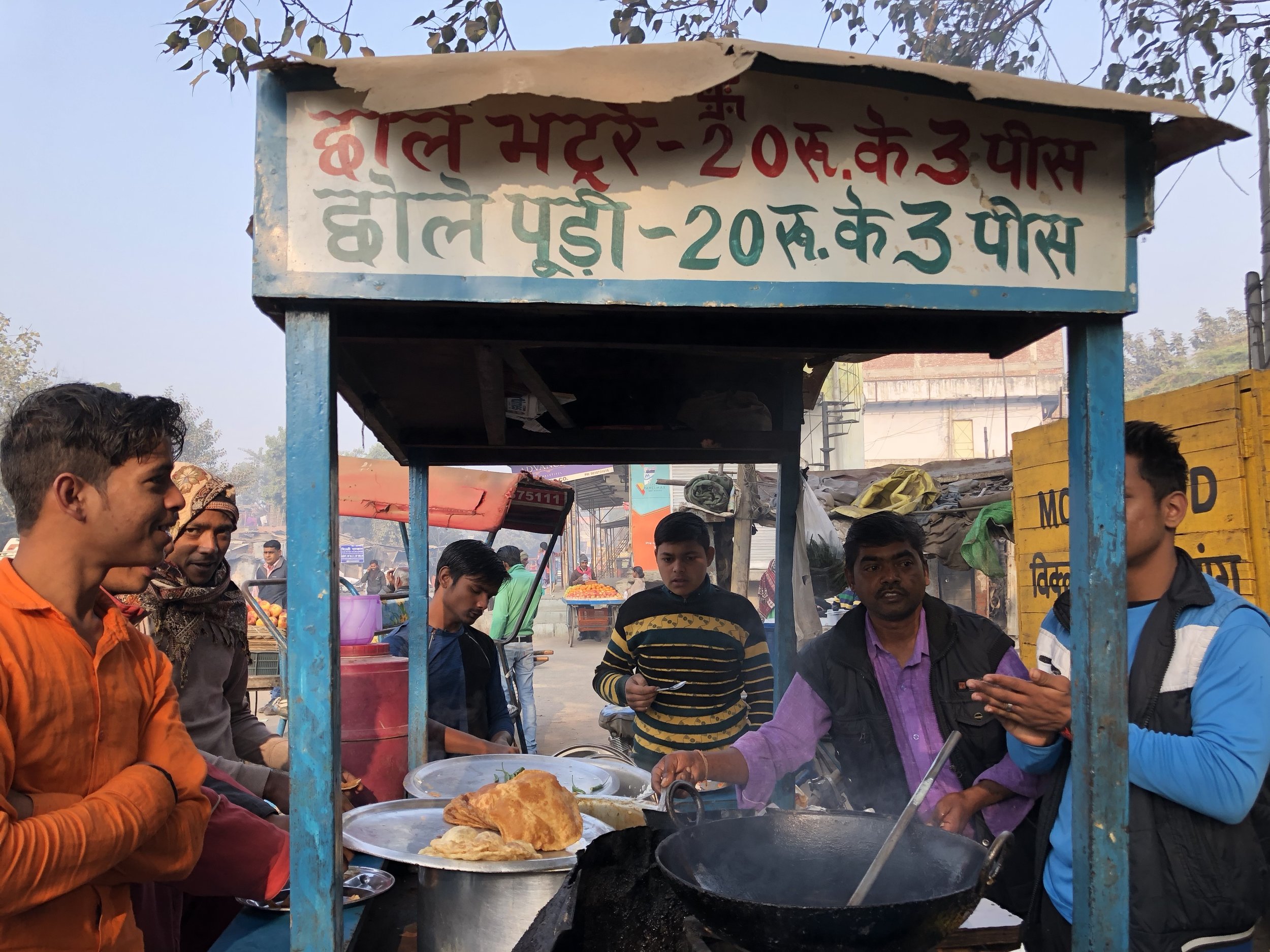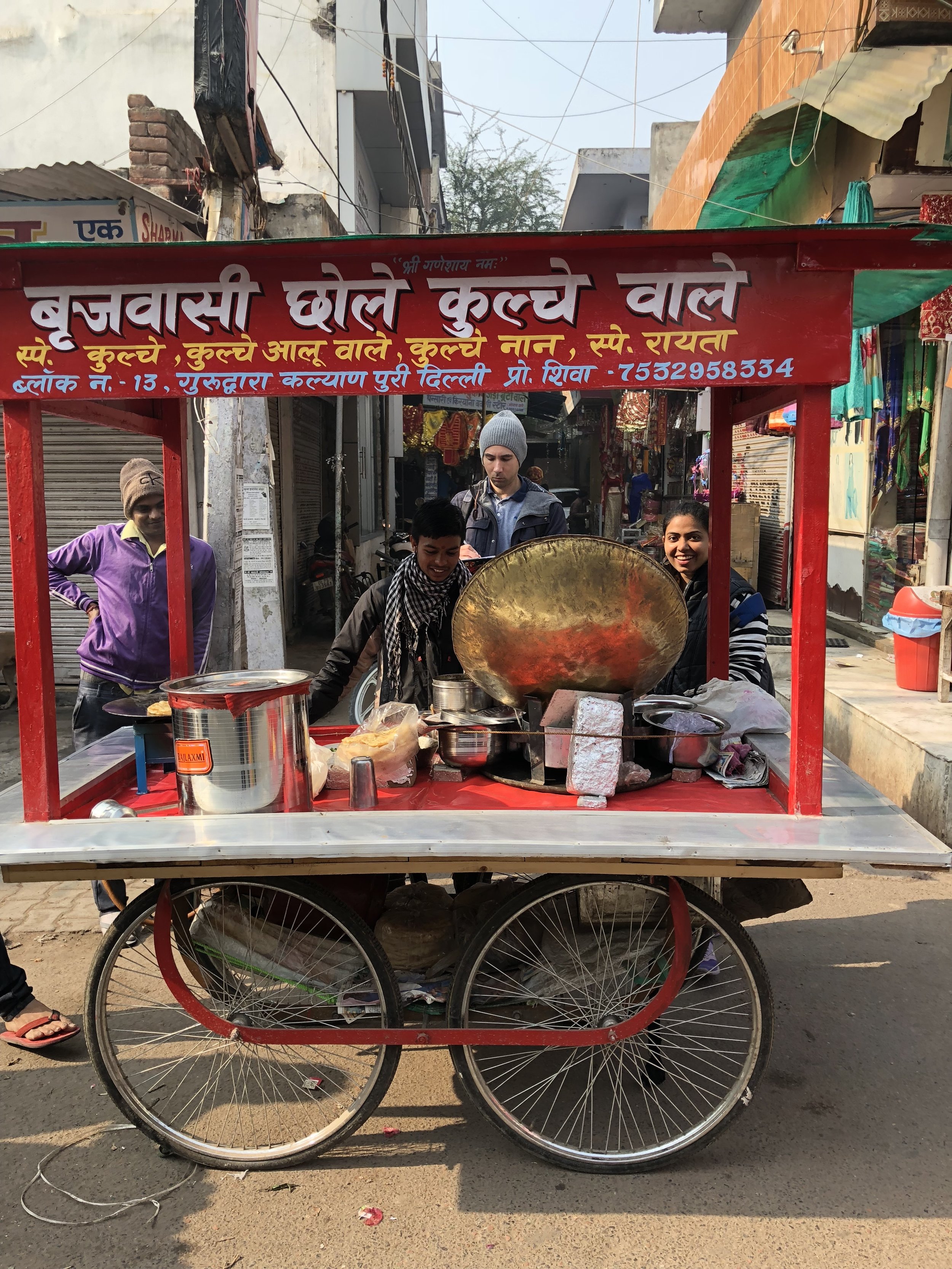BY GRACE CRAMER, ADAM WEBER, LYNN PHANG, AND ERIN SMITH
Grace Cramer, Adam Weber, Lynn Phang, and Erin Smith are second-year International Development students who traveled to New Delhi, India, to study the potential for adoption of fortified ingredients by street food vendors as part of the IDEV practicum with the Global Alliance for Improved Nutrition.
The IDEV Practicum allows students to work directly with public, private and non-governmental organizations as a capstone to their graduate studies. The IDEV Practicum Blog is a six-part series that chronicles the travels of IDEV students who take on client projects over winter break.
Working on a Friday night… sucks, right? Well, not always. Certainly not if your job that evening is to wander around a street food festival, speaking to vendors and sampling their tasty wares. From stalls selling crispy and tangy fish pakora to those with vast vats of richly-spiced and satisfying lamb biryani, the National Street Food Festival brings together 500 vendors from across India every January. Organized by the National Association of Street Vendors of India (NASVI) in conjunction with the Food Safety and Standards Authority of India (FSSAI), the annual festival aims to improve Indians’ perceptions of street food. We all know that Indian street food is delicious, but could it make Indians healthier?
This is where our practicum team came in. We’d been asked by our client, the Global Alliance for Improved Nutrition (GAIN), to look into how the safety and nutrition of street food could be improved and, specifically, what role fortification could play in improving its nutritional value. Food fortification is a hot topic in India right now. For FSSAI, it has been a major area of research and investment. The agency has spent recent years lobbying food producers to add key vitamins—A, B12, and D as well as iron and folic acid—to staples such as rice, wheat flour, oil, milk, and salt.
This could be critical in improving the lives of many Indians. Currently, 55% of women and 24% of men in India suffer from iron-deficiency anemia, resulting in fatigue, shortness of breath, and poor concentration—and iron is just one crucial micronutrient. For low-income households who rely on manual labor for income, micronutrient deficiencies have serious economic as well as health implications. Yet NASVI estimates that if just 2,000 street food vendors, each assumed to serve 100 customers per day, were using fortified ingredients, it would be possible to reach 2,000,000 of New Delhi’s low-income citizens.
The potential is clear, but could it be done? That is what our team set out to find. We interviewed 65 street food vendors in three low-income areas of New Delhi: Mandawali, Kalyanpuri and Shahadra. In addition to surveying vendors, we interviewed consumers and retailers and observed hygiene practices. To further validate our findings, we also met with stakeholders from the government and civil society and with fortification and behavioral change experts.
The result? There certainly is potential. However, a project solely focused on fortification wouldn’t work just yet. The problem is one of demand and supply. On the demand side, there is not yet a strong desire for more nutritious food, in part because many consumers expressed a belief that street food was already healthy. There was also a lack of awareness around fortification. None of the survey participants we spoke to was aware of fortified ingredients or what fortification meant, although we found that some vendors were unwittingly already using fortified oils. FFSAI understood the challenge, acknowledging that even well-off Indians were unaware of the concept or importance of fortification.
The supply side was equally challenging. Our research revealed that many vendors make a 100 rupee ($1.50) daily margin—and that was before local law enforcement had demanded a bribe. Indeed, one of the challenges most citied by vendors was harassment from local government. If vendors can’t pay a bribe, they often have their equipment confiscated, and the police or the municipality demand a fee for its return. Low margins combined with the futility of capital investment leaves vendors with little fiscal space to consider upgrading their ingredients.
Even if vendors had the financial wherewithal, there are some ingredients they are simply unlikely to replace with fortified alternatives. This is the case with atta flour, a type of Indian wheat flour. A key ingredient in many street delicacies, it is bought unbranded from local retailers and is typically produced by neighborhood flour mills, also known as chakki mills. As flour fortification is a technically complex and an expensive process, it is unlikely to be adopted by these small producers, and mandating fortification might hurt their livelihoods. Vendors are also unlikely to abandon their habitual retailers, where the relationship runs deeper than mere exchange. Retailers often act as no-interest credit line to vendors in hard times and provide guidance and advice.
With no consumer demand, low margins, and little incentive to invest, it is difficult to imagine how vendors might be prevailed upon to adopt fortified ingredients, even if they were readily available. However, it was heartening to see many vendors using fortified oils by accident. It might be that a “health-by-stealth” approach is the best route, with FFSAI ensuring that as many products are fortified as possible. Otherwise, without consumer and vendor education and government reform, the fortification agenda may struggle to gain traction. Even so, we still heartily recommend a dose of New Delhi’s street food.
PHOTO CREDITS: Grace Cramer, Adam Weber, Lynn Phang, and Erin Smith
To read about what work the other IDEV Practicum teams did this year, visit this page.

